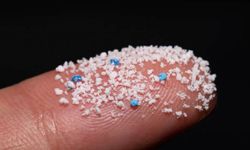Using sophisticated chemical and structural imaging techniques, researchers from King's College London in the UK have uncovered new information about the teeth of the Komodo dragon, considered the world's largest lizard.
Scientists have revealed that the serrated parts at the tips of the species' teeth are covered in an iron-rich layer.
Noting that many reptiles, including monitor lizards and some crocodile species, also have some iron in their teeth, the researchers noted that unlike other reptiles, this layer is concentrated at the tips of the Komodo dragon's teeth, coloring the tooth orange and helping to maintain the sharpness of the tooth.
NO OTHER CARNIVOROUS REPTILE HAS IT
Scientists pointed out that this feature helps the Komodo dragon tear its prey apart easily, emphasizing that this has never been detected in any carnivorous reptile before.
Komodo dragons are found only in Indonesia's national park of the same name and on Flores and some of its islands.
According to data from the International Union for Conservation of Nature, only 3,458 Komodo dragons remain in the wild.
The reptiles, which can grow up to 3 meters long and weigh up to 90 kilograms, are endangered as human activities and climate change destroy their habitat.
Details of the study were published in the journal "Nature Ecology & Evolution".















